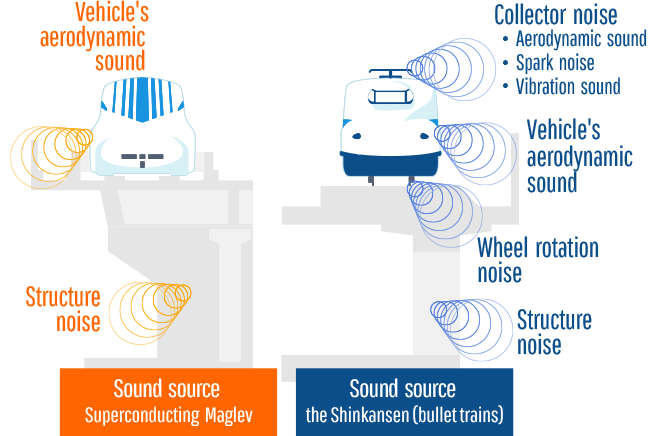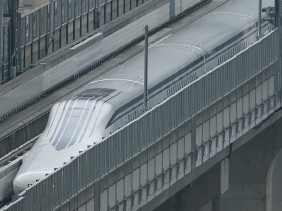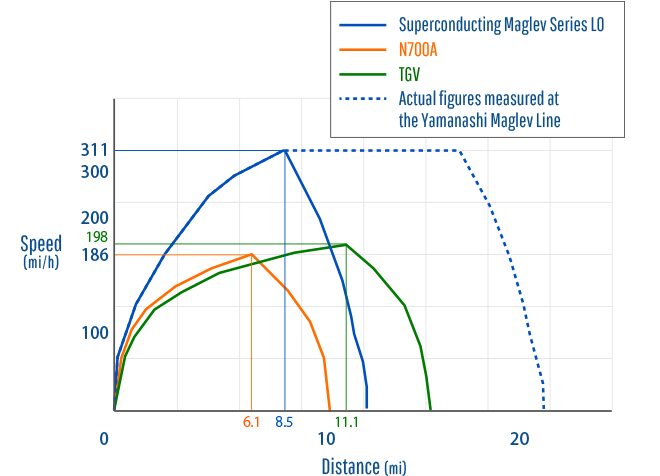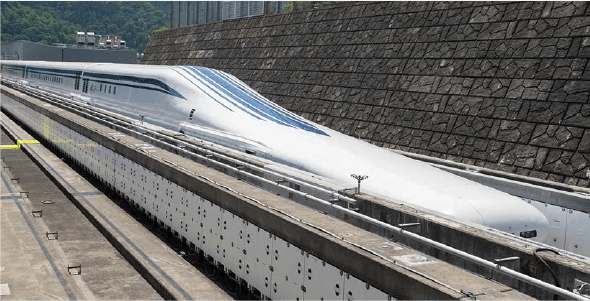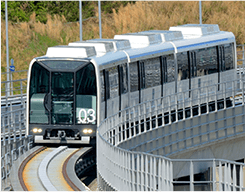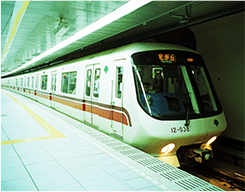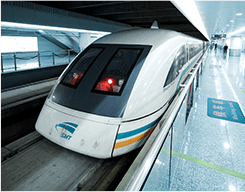Conventional trains produce friction between the wheels and rails while operating. This limits maximum speed because the wheels slip when moving too fast. The maglev concept overcomes this limitation by levitating the train above the track.
This is why the Maglev concept was developed, using magnetic force to levitate and operate trains.
This system also resolves issues below.

MOTOR
The motor uses magnetic force to convert electricity to rotation. Attractive forces between north and south poles, and repulsive forces between S-S and N-N poles, power the train.

LINEAR MOTOR
The Chuo Shinkansen propels trains forward by the force of magnets on car bodies and "guideway" tracks.
Why is it called a "linear motor"?
The Superconducting Maglev system is actually based on a very common motor principle. The term "linear motor" comes from the fact that motors are lined up linearly.
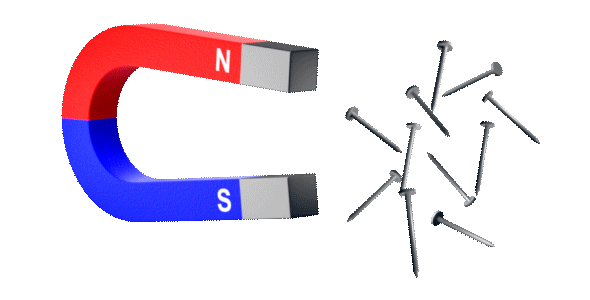
PERMANENT MAGNET
A permanent magnet is a magnetized material that creates a continuous magnetic field.

Properties of an electromagnet
1. It requires electric current to act as a magnet.
2. Its N and S poles can be switched by changing the direction of electric current.
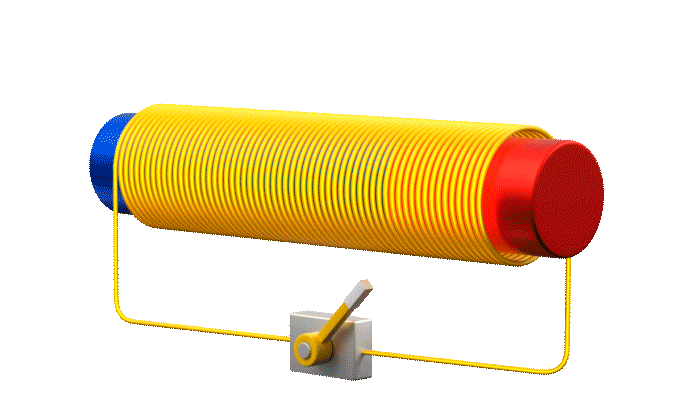
In the case of
normal conducting magnets
A normal conducting magnet requires a substantial amount of electric power to deliver powerful magnetic force. Its electrical resistance generates heat, wasting energy.
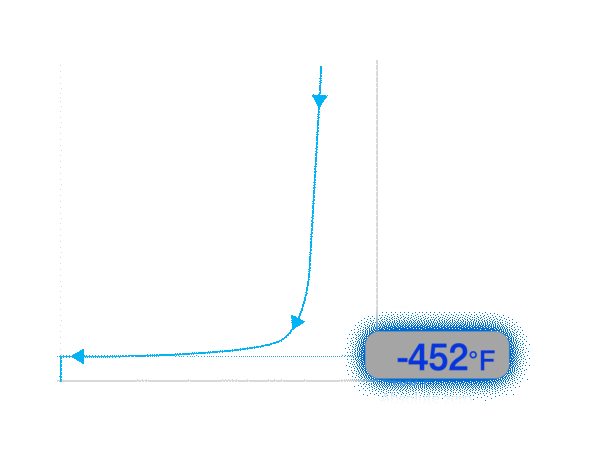
To gain powerful magnetic force, the Superconducting Maglev uses superconducting magnets, taking advantage of a phenomenon called "superconductivity,“
What is superconductivity?
Superconductivity is a phenomenon that happens when the electrical resistance of certain materials approaches zero at very low temperature When an electrical current is applied to a superconducting coil, the current continues to flow almost indefinitely.
Achieving the superconductive state
In the Superconducting Maglev system, liquid helium is used to cool the superconducting material, niobium‐titanium alloy, to 452 degrees Fahrenheit below zero. This achieves semi-permanent feeding of electric current and a stable state of superconductivity with no thermal energy loss, thereby generating even greater magnetic force.
The guideway contains Propulsion Coils as well as Levitation and Guidance Coils.
"Superconducting magnets" on vehicle and electromagnets on the guideway attract and repel one another, levitating the train by about 3.9 in. and propelling it forward.

The superconducting magnets on vehicle are set to N and S poles alternately. Electric current is fed to "propulsion coils" on the guideway, and their N-pole and S-pole assignment is switched electrically to propel the train forward. The frequency of electric current is adjusted to control the speed for switching between N and S poles, so as to regulate the train's speed.

The Superconducting Maglev uses the effect of the "Levitation and Guidance Coils" turning into magnets when other magnets come close. When superconducting magnets on vehicle pass by the Levitation and Guidance Coils at high speed, electric current runs through the Levitation and Guidance coils, generating magnetic force and levitating and maintaining the train at a height where the train's weight is balanced against the magnetic force. (Levitation height: about 3.9in.) There is no need to feed electricity to the Levitation and Guidance Coils to achieve train levitation.

Vehicle travels at the center of the guideway. Even when the vehicle leans closer to one side, the magnetic force that acts between superconducting magnets and the Levitation and Guidance Coils keep the train centered in the guideway at all times. The magnetic force prevents the Superconducting Maglev from crashing into guideway walls and contributes to stable operation.
















